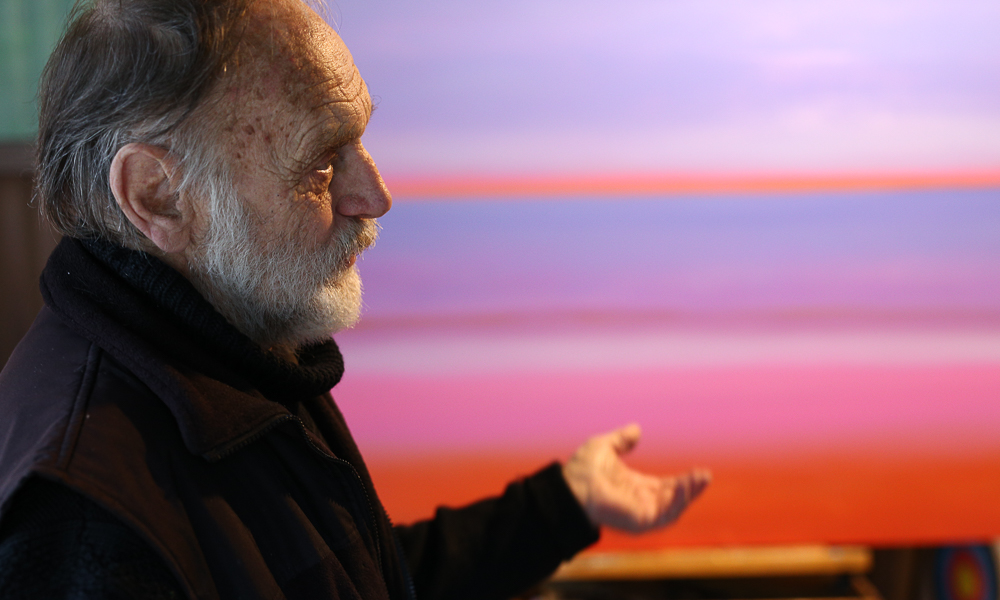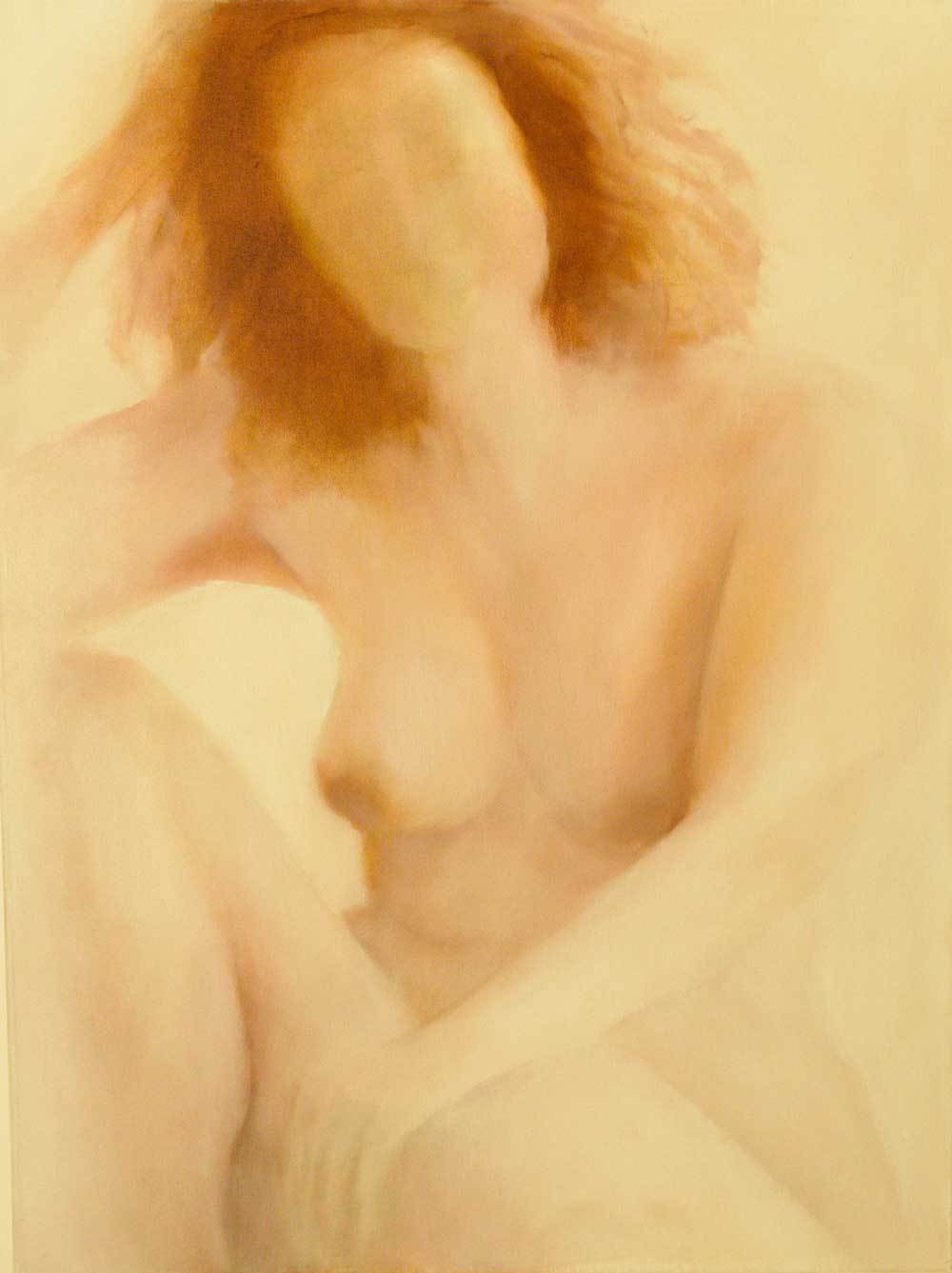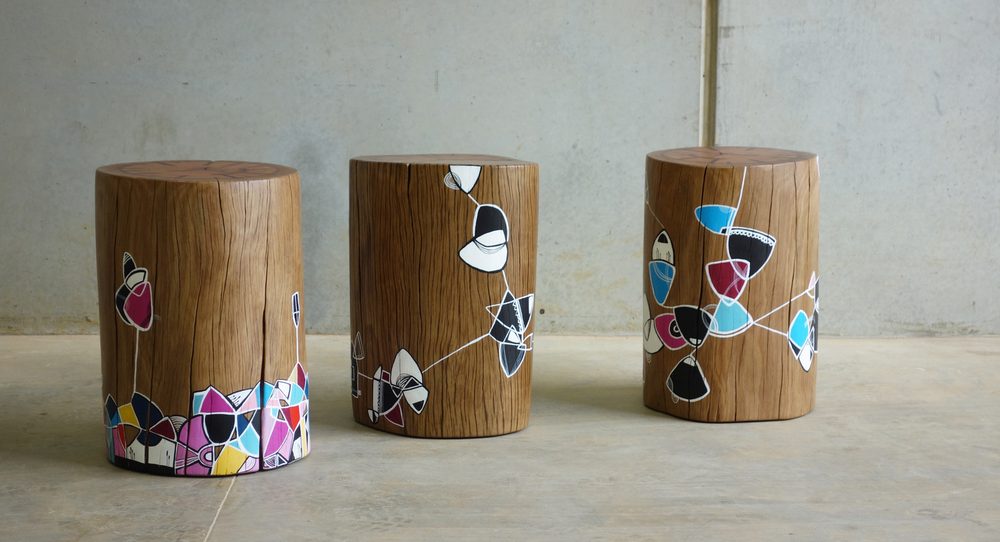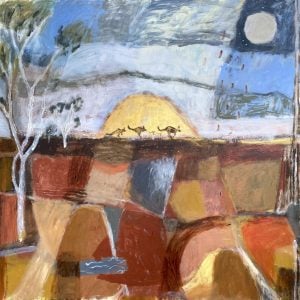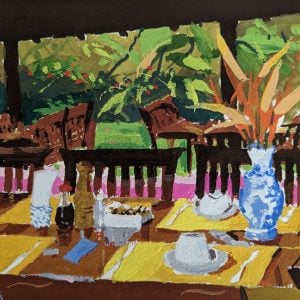What Makes an Artist – Henny van den Wildenberg
Every now-and-then you meet someone who really leaves a mark on your mind. This minority thinks differently to the majority, and inspires you to discover a new thought process for everyday life. Henny van den Wildenberg is one of these people. It was a wet and windy Monday among the outskirts of Adelaide, “much like a regular day in Holland” explains Henny of his homeland. Henny’s studio is a humble tin shed, surrounded by South Australian bush land where he is often joined by the local kangaroos.
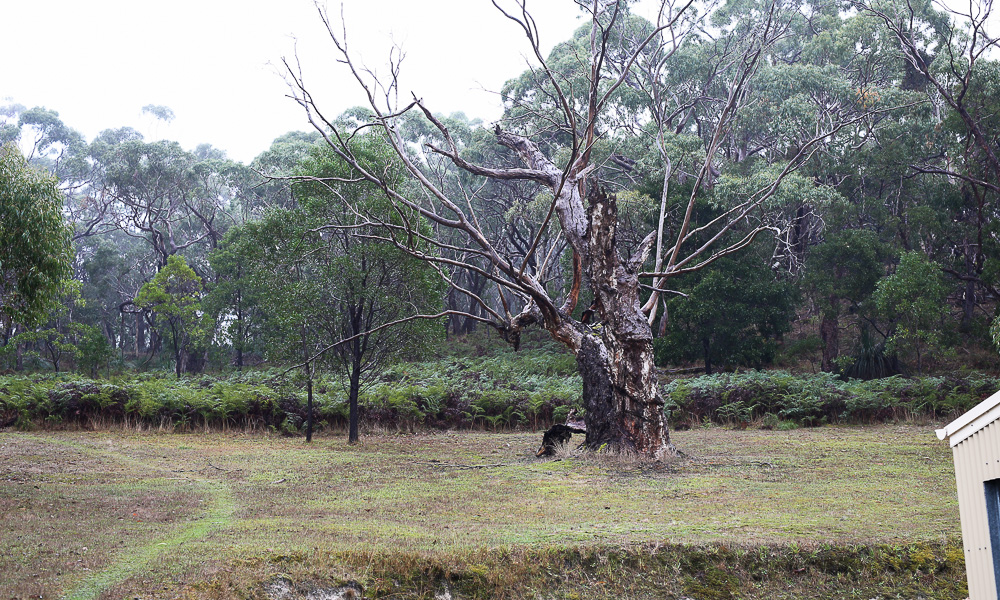
Bush land surrounding Henny’s studio.
Tucked away among his growing library of paintings, this artist has his own library of experiences to match. There is subtlety of his work and depth in the underlying meaning. It’s there in ways that are developed through experience – not just through artistic experience, but through life experience. The use of a restrained palette and subjects creates, as Henny puts it, the “reverse of the spectacular”.
Growing up in Holland, Henny was taught to paint by his father before he won his first art prize at the age of ten. However, his father encouraged him to pursue a more financially stable career. His studies in art and design led him to the world of industrial design at Philips Eindhoven, and his support to the Swiss/French architect, Le Corbusier, during the building of Poeme Electronique for the Brussels World’s Fair in 1958. He migrated to Australia in 1961 where he became a lecturer of art and design at various places in Australia and back in Holland. During his teachings, Henny met his now dear friend and Australian author, Mem Fox, who inspired his Archibald Finalist painting. Since then, Henny has retired and devoted himself to full-time painting.
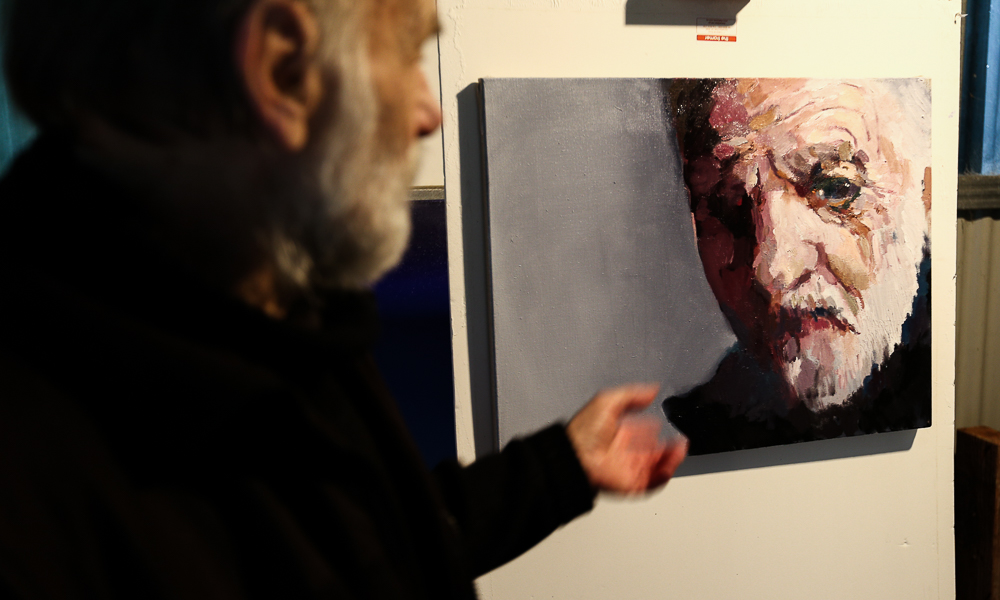
Henny with a self-portrait in progress.
Throughout his long and versatile career, he has continued to paint. However, Henny doesn’t consider himself to be ‘a painter’ with a particular style. Rather he paints for the love and experimentation of it, while the look and feel of his paintings evolve based on his experiences. Despite the significance of events like the Brussels World’s Fair, Henny does not believe experiences like this has impacted his art in a meaningful way. Rather it is the experience of humanity and nature, and the beauty he experiences from it.
Henny’s time during WWII appears to have greatly shaped his views of nature, beauty and humanity. He does not own a television, as he explains there is too much negativity where we should be setting our sights on the beauty of people and nature. Meditating, explains Henny, is his way of ridding his mind of all the negativity before he begins a painting, “once all the bad is gone, the painting is what is left over.”
Henny describes the thought process that goes into his paintings.
From simple experiences like rebelling as a young adult in a bid to cast eyes on the so-called witches in his home town inspiring ‘Witches Bog’, to greater experiences of love that inspired his painting ‘Fog’ – the setting is at Henny’s home on a misty day, portrayed in restrained shades of green. But it is not about the trees nor the setting, instead it draws us into the possibility of a love affair. “Having love and giving love. It is the most beautiful thing in life. It is priceless,” Henny proclaims.
Henny describing the possibility of a love affair in his painting, ‘Fog’.
Henny feels a strong connection to nature and beauty, which is evident in his subject choices consisting of female models, bold sunsets and misty horizons. His deteriorating eyesight leaves him with a strong impression of colour – like the striking orange on the horizon at last light as depicted in ‘The Last Kiss’ – and the possibility of what could be, instead of an exact detailed subject.

Indigo Reflection by Henny van den Wildenberg
However, Henny explains that he doesn’t want to impart his own meaning of a painting onto a viewer. He wants each viewer to make up their own mind about what a painting is or means to them. “A painting can change simply by changing the lighting.” This is also why he shies away from using distinctive shapes or objects in his works. Henny describes the difficultly of explaining to someone the concept of something if they have not experienced it themselves.
Life Study by Henny van den Wildenberg
The belief that experience shapes our thoughts and the way we view things thereafter is important to Henny’s thought process. “You’ve never been swimming before, and see someone dive into a pool and swim right to the bottom. You know the water is one metre deep and weighs about a tonne, so you ask them how it is possible that they move through the water. They can’t really describe to you how the water feels and what it is like to move through the water. You just have to try it for yourself.”
View and buy Henny van den Wildenberg’s artwork online here.
Photographs by Julian Cebo.
Keep up to date with the Australian and international art scene and discover new artists by signing up to our newsletter here.


